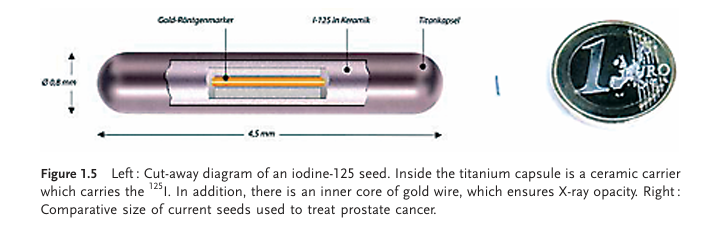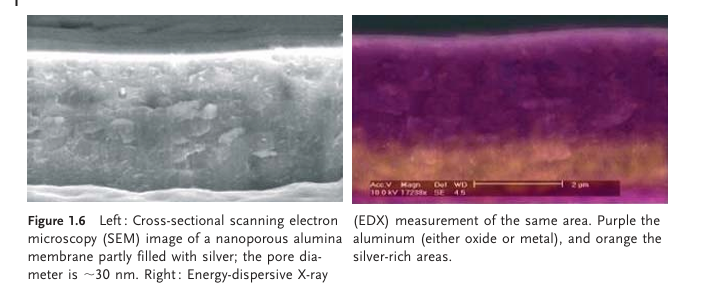

النبات

مواضيع عامة في علم النبات

الجذور - السيقان - الأوراق

النباتات الوعائية واللاوعائية

البذور (مغطاة البذور - عاريات البذور)

الطحالب

النباتات الطبية


الحيوان

مواضيع عامة في علم الحيوان

علم التشريح

التنوع الإحيائي

البايلوجيا الخلوية


الأحياء المجهرية

البكتيريا

الفطريات

الطفيليات

الفايروسات


علم الأمراض

الاورام

الامراض الوراثية

الامراض المناعية

الامراض المدارية

اضطرابات الدورة الدموية

مواضيع عامة في علم الامراض

الحشرات


التقانة الإحيائية

مواضيع عامة في التقانة الإحيائية


التقنية الحيوية المكروبية

التقنية الحيوية والميكروبات

الفعاليات الحيوية

وراثة الاحياء المجهرية

تصنيف الاحياء المجهرية

الاحياء المجهرية في الطبيعة

أيض الاجهاد

التقنية الحيوية والبيئة

التقنية الحيوية والطب

التقنية الحيوية والزراعة

التقنية الحيوية والصناعة

التقنية الحيوية والطاقة

البحار والطحالب الصغيرة

عزل البروتين

هندسة الجينات


التقنية الحياتية النانوية

مفاهيم التقنية الحيوية النانوية

التراكيب النانوية والمجاهر المستخدمة في رؤيتها

تصنيع وتخليق المواد النانوية

تطبيقات التقنية النانوية والحيوية النانوية

الرقائق والمتحسسات الحيوية

المصفوفات المجهرية وحاسوب الدنا

اللقاحات

البيئة والتلوث


علم الأجنة

اعضاء التكاثر وتشكل الاعراس

الاخصاب

التشطر

العصيبة وتشكل الجسيدات

تشكل اللواحق الجنينية

تكون المعيدة وظهور الطبقات الجنينية

مقدمة لعلم الاجنة


الأحياء الجزيئي

مواضيع عامة في الاحياء الجزيئي


علم وظائف الأعضاء


الغدد

مواضيع عامة في الغدد

الغدد الصم و هرموناتها

الجسم تحت السريري

الغدة النخامية

الغدة الكظرية

الغدة التناسلية

الغدة الدرقية والجار الدرقية

الغدة البنكرياسية

الغدة الصنوبرية

مواضيع عامة في علم وظائف الاعضاء

الخلية الحيوانية

الجهاز العصبي

أعضاء الحس

الجهاز العضلي

السوائل الجسمية

الجهاز الدوري والليمف

الجهاز التنفسي

الجهاز الهضمي

الجهاز البولي


المضادات الميكروبية

مواضيع عامة في المضادات الميكروبية

مضادات البكتيريا

مضادات الفطريات

مضادات الطفيليات

مضادات الفايروسات

علم الخلية

الوراثة

الأحياء العامة

المناعة

التحليلات المرضية

الكيمياء الحيوية

مواضيع متنوعة أخرى

الانزيمات
Seeds
المؤلف:
Prof. Dr. Christof M. Niemeyer, Prof. Dr. Chad A. Mirkin
المصدر:
Nanobiotechnology: Concepts, Applications and Perspectives
الجزء والصفحة:
p7-10
2025-01-12
1671
The concept of local drug delivery can be extended to the irradiation of malignant tissue, the most prominent examples being devices used to irradiate tissue locally; these are the so-called “seeds”. A cut-away diagram showing the internal structure of a typical seed is shown in Figure 1.5 (left) [1].

The length of such an implant is 5 mm, and its diameter 0.8 mm. The implant consists of a capsule that surrounds the inner carrier of the radionuclide shown (see Figure 1.5; left) [1]. Seeds are used to provide radiation therapy to prevent or reduce the growth of tumors which do not form– or have not yet formed– metastases; an example is early prostate cancer. Typical nuclides used in cancer therapy are 125I and 103Pd. These sources are also used in cardiology to irradiate the restenotic area [2]. Instead of using drugs (as described previously), the radiation prevents the smooth muscle cells (SMCs) from further growth. In this treatment, the seeds are further encapsulated in a special delivery catheter which is brought to the narrowed region for a certain time before or after implanting a stent. For any given seed in cardiology or oncology, the carrier con sists of either a ceramic or metallic wire or tube which on occasion is chemically modified to bind the desired isotope. For example, in order to bind 125I (which is a gamma-emitter with a half-life of 60 days), either silver is deposited onto the carrier, or the carrier is completely made from thin silver wire. By using a chemical precipitation reaction, the 125I is bound onto the surface of the carrier. The chemistry occurring is determined by the very small amounts of the isotope needed to ensure correct activity of the seed. For example, to fix a typical therapeutic activity of 40 MBq (1 Bq = 1 Becquerel, which is equal to 1 decay s–1) 125I, only 60 ng of the pure 125I isotope is needed to react with the silver carrier. Even the extremely low solubility of silver iodide cannot be easily attained when working with such small amounts, and terms such as insoluble’ become meaningless in that range.
When using ceramic carriers, heavy metals such as gold must be applied, either as wires or very small dots to ensure the X-ray visibility of the seeds. So ultimately, the device consists of an X-ray-dense marker, a specific carrier for the radionuclide, and a laser welded titanium or stainless steel capsule [3].
The capsule is an absolute requirement as no leakage of radioactive materials must occur. This leakage would lead to a systemic contamination of the patient, and cause da mage to healthy tissue. Iodine isotopes in particular are known to concentrate in the thyroid gland and lead to severe problems. For this reason, seeds must undergo very different tests to ensure their heat stability and mechanical stability and safety during implantation, especially with regard to leak-tightness [3]. In addition to these safety regulations, the biocompatibility must also be ensured. At first glance, it appears contradictory that a radioactive implant must be biocompatible, but if one takes into consideration that the tumor tissue will be destroyed and ultimately replaced by healthy tissue, then biocompatibility of the implant after complete decay of the radioactive material in necessary. In summary, implant safety is the first important issue, followed closely by biocompatibility and finally processing of the radioactive seed. The point to be raised is, how can nanotechnology improve these issues?
The major key point of handling radioactive compounds is to increase the efficiency of the process. Radioactive nuclides are expensive to produce, handle and dispose of, as the need for protection and safety is huge. Materials in the nanometer scale consist of a very large fraction of the surfaces where the reaction between the radionuclide and the carrier take place. The following account focuses on 125I seeds in order to enlighten this point. 125I is available from a variety of different sources, usually as a byproduct of fission processes inside radioactive reactors [4]. After separation and production of a silver iodate (III) solution, reduction of the silver leads to the formation of iodine anions that are able to react with silver-cations. As the silver is fixed on a solid carrier, the silver surface significantly determines the rate of reaction and the final yield. A nanoscale silver surface is, for those reasons, of great benefit. Nanoporous alumina offers a natural nanometer-size cavity in which silver can be deposited.
This process is very well established; starting from silver nitrate solution, silver wires can be formed starting at the base of the pores by applying an alternating current [5]. The oxide is a weak conductor during the cathodic half cycle, but blocks the current in the anodic half-cycle. In addition, by using an alternating current, polarization of the surface can be reduced to a minimum. A cross-section through an anodized and silver-filled wire is shown in Figure 1.6. The topographical image on the left in Figure 1.6 shows the remaining aluminum wire at the bottom, with the oxide layer on the top. The silver wires cannot yet be distinguished from the surrounding oxide. An energy dispersive X-ray analysis (EDX) clearly shows the presence of silver wires in the lower third of the alumina layer. The silver nanowires react easily with the 125I. The yield of the labeling process with 125I using the silver nanowires may be up to 98%, the maximum capability of uptake is far above that of any therapeutic dose and, due to the special porous structure, the radioactive compound is bound deep inside an inert, ceramic-type layer.
This last-mentioned feature, together with the fact that every single pore takes up only a very small part of the total activity, provides additional safety. While all commercial seeds need to be encapsulated into a laser-welded capsule to prevent any undesired release of radioactive material, dividing the activity into very small fractions and burying them in a strong matrix eliminates the need for an additional capsule. The critical amount derived from ISO standards [3] to be released from a single seed is~ 200 Bq per day; when using the above-described system, the measured value is~ 2 Bq per day. In case of any potential damage, either during application or afterwards, a disrupted Ti-capsule will surely release all the activity in a short time, whereas a broken nanodevice will probably lead to several thousand opened pores that release less than 1 ppm of the iodine into the body, while the remainder is retained safely inside the structure. Another important aspect of the nanostructured implant surface is the fact that the activity is very homogeneously distributed over the implant surface. On the surface, the pores (1010 per cm2) act as a kind of nano test-tube. Hence, even when only 1% of all the pores are filled with radioactive material, 109 pores remain unfilled. For this reason, dosimetry measurements show a perfect image of the seed geometry itself, making it easy for physicians to calculate very accurately the individual doses for each patient, thereby minimizing side effects in the surrounding tis sue. Cell tests using MC3T3 cells have been performed on silver-free specimens in order to prove the biocompatibility of the porous oxide itself. The growth rate of the cells have been determined in comparison to polystyrene standard and to a negative control including sodium azide. The cell-growth curves recorded for cells grown on nanoporous alu mina and polystyrene as control did not differ with respect to their slope for both materials, thus indicating similar growth rates on the different substrates. However, when so diumazide was added as a negative control the growth rate was close to zero, clearly indicating that cells growth is stopped in non biocompatible environments. So, the question of how nanotechnology can improve local brachytherapy by the use of seeds must be answered in different ways. First, the safety of the device should be further improved, as must be the production process and technical characteristics of the single seeds. All of this can be achieved by using the nanoporous surface acting as a carrier for the activity, but without causing a loss in biocompatibility when compared with current seed technologies.

Refernces
-----------
1- O. Siiman, K. Gordon, A. Burshteyn, J. A. Maples, J.K. Whitesell, Cytometry 2000, 41, 298–307.
2- G.R. Souza, T.J. Miller, J. Am. Chem. Soc. 2002, 123, 6734–6735.
3- H. Gao, Y. Zhao, S. Fu, B. Li, M. Li, Colloid Polymer Sci. 2002, 280, 653.
4- R. Meallet-Renault, P. Denjean, R.B. Pansu, Sensors Actuators B-Chemical 1999, 59, 108–112.
5- R. Meallet-Renault, H. Yoshikawa, Y. Ta maki, T. Asahi, R.B. Pansu, H. Masuhara, Polymers Adv. Technol. 2000, 11, 772–777.
 الاكثر قراءة في مفاهيم التقنية الحيوية النانوية
الاكثر قراءة في مفاهيم التقنية الحيوية النانوية
 اخر الاخبار
اخر الاخبار
اخبار العتبة العباسية المقدسة

الآخبار الصحية















 قسم الشؤون الفكرية يصدر كتاباً يوثق تاريخ السدانة في العتبة العباسية المقدسة
قسم الشؤون الفكرية يصدر كتاباً يوثق تاريخ السدانة في العتبة العباسية المقدسة "المهمة".. إصدار قصصي يوثّق القصص الفائزة في مسابقة فتوى الدفاع المقدسة للقصة القصيرة
"المهمة".. إصدار قصصي يوثّق القصص الفائزة في مسابقة فتوى الدفاع المقدسة للقصة القصيرة (نوافذ).. إصدار أدبي يوثق القصص الفائزة في مسابقة الإمام العسكري (عليه السلام)
(نوافذ).. إصدار أدبي يوثق القصص الفائزة في مسابقة الإمام العسكري (عليه السلام)


















